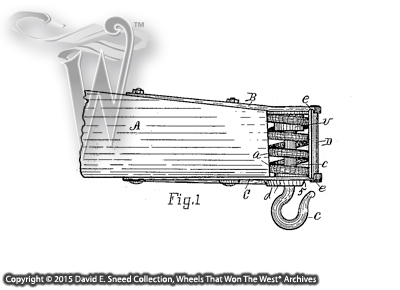In my studies of early American wagons, I’vehad the opportunity to review thousands of different sets of wheels. Over time, I’ve come to the conclusion that mostof the survivors are mysteries just waiting to be solved. In other words, seldom has the vehicle beenso thoroughly evaluated that its entire story is known or told. Instead, most of these rolling works of art arepresented with basic, limited descriptions and, if we’re not careful, we tendto fill in the blanks with best guesses, assumptions, or even disinterest. Worst yet, a lack of information cancontribute to depressed vehicle values and missed opportunity to restore a great historical narrative.
Rarely are there complete dead ends toany of this research. While efforts to fill in background details oftentake considerable time, even if the personal history of a particular vehiclecannot be traced, the makeup of the piece can say a great deal about its past. Construction elements can point to aparticular maker, era of manufacture, levels of originality, and periodadvancements. Few designs are as simple as they might appear. With thatthought in mind, another point to remember is that different types ofinnovation are often unrecognized by modern audiences. As a result, they are regularly overlooked –even within some museum settings. Clearly,anytime something goes unnoticed, there is a possibility for both positive andnegative surprises.
For collectors, when it comes time tobuy a piece, it’s helpful to know as much as possible about the vehicle. Several years ago, I watched an early 20thcentury wagon sell at auction for a fairly high price. It was a well-known brand and heavilypromoted as a rare example of a completely original wagon. While it was predominantly equipped as it wasfrom the factory, it was not an all-original piece. Unbeknownst to most, the doubletree andsingletrees were from another brand. This might seem like a small point but, to a collector, finding out thisinformation after the fact can be both embarrassing and potentiallycostly. Locating the correct pieces toreplace wrong elements can require considerable time as well as additionalfunds to ensure the vehicle is indeed original.
Nonetheless, the doubletree, inparticular, was intriguing to me as it represented technology dating to thelate 1800’s. The distinction lay intightly coiled springs on the outer edges of the evener. These springs were connected to thesingletrees, providing a cushion of sorts when the wagon was drawn. The springs were said to save wear and tearon the horses’ shoulders as well as the harness. It was also claimed to help prevent thetendency of excitable horses to balk.
 |
| This image shows part of an early doubletree patent. It was one of dozens focused on improving eveners. |
While some U.S. patents on doubletrees willpredate the Civil War, there were continual advances in this arena all the waythrough the early 1900’s. There iseasily more than a half century of patent submissions and approvals on just thisone segment of period wagon accessories. In mypresentations, evaluations, and discussions with others, these types of revelations cancome as a surprise. They’reanother reminder, though, that wood-wheeled wagons are far from simple machines. Knowing these details with indisputableconfidence can greatly enhance our own appreciation for a set of wheels while also creating opportunities to showcase the vehicle as the historic piece it is. Please Note: As with each of our blog writings, all imagery and text is copyrighted with All Rights Reserved. The material may not be broadcast, published, rewritten, or redistributed without prior written permission from David E. Sneed, Wheels That Won The West® Archives.